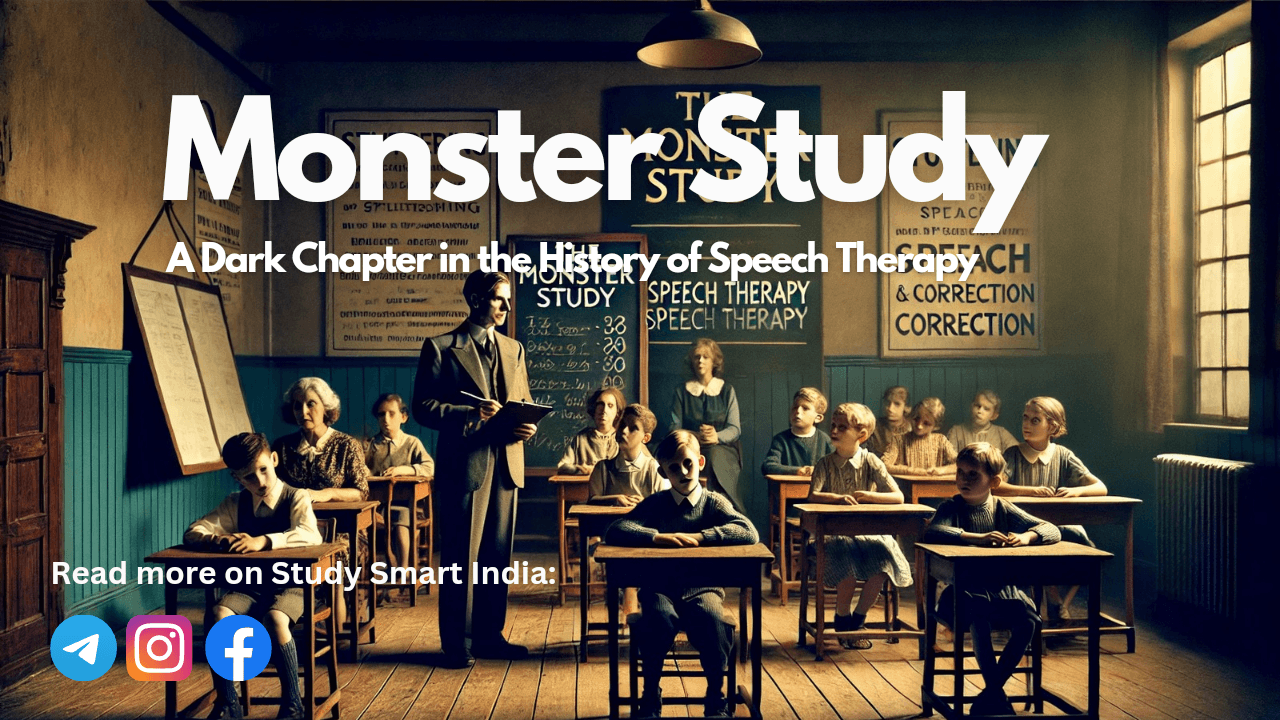Perhaps the most controversial and highly questionable study in the history of psychological research is the “Monster Study,” which was conducted in 1939. Owing to its disturbing and even unethical methodology, this experiment was concerned with finding a cause of stuttering-the scar this study left behind on speech therapy’s face stays forever.
The Origins of the Study
This Monster Study was conducted by Wendell Johnson, a renowned speech pathologist at University of Iowa, and his graduate student, Mary Tudor. It examined whether stuttering is or is not an acquired condition. Johnson labeling a child as stutterer might cause or develop in the child.
The subjects and methodology
Twenty-two orphans were chosen from the Iowa Soldiers’ Orphans’ Home for this experiment. The age of the children ranged between 5 years old and 15 years. Such children were categorized into two. Children with no speech disorder were categorized in one category. Sharper criticism was given in case of normal errors of speech and told that the child had a grave problem of speech.
This was repeated in the second group, who were children and actual stutterers with positive reinforcements and encouragement on their speech.
The experimenters wanted to see how these treatments affected the children in their speech patterns. However, the methodology was blind to the emotional and psychological damage that the participants underwent.
Devastating Consequences
The so-called stuttering children, who never presented with any speech abnormalities before, started to exhibit symptoms of anxiety and withdrawal. Some even developed speech problems. All confidence was destroyed, and the stigma that the researchers imposed would leave scars well into adulthood.
Later in life, reflecting on it, Mary Tudor, who actually spent most of her time with the children, claimed that she had emotionally hurt them. Wendell Johnson defended the experiment, stating that it was an effort worth it to understand the psychological side of stuttering.
Ethical Backlash
It gained little publicity until the day it came into the limelight due to a 2001 investigation that exposed the experiment and brought public outcry. The experiment has been generally condemned as a gross violation of ethical standards. Conducting an experiment on vulnerable orphan children and intentionally inflicting psychological damage on them is, according to the principles of informed consent and protection of participants, utterly despicable.
The State of Iowa, in 2007, issued an official apology and, in addition, provided a monetary settlement to the surviving participants. This may be too little too late for most, but it finally drove home the need for ethical oversight in research.
Legacy and Lessons Learnt
The Monster Study is an important reminder of the obligations that researchers have regarding ethics. While it may have had some contributions toward the explanation of speech disorders, the procedures overshadowed any scientific benefits it might have had in place. It serves as one of the most important cautionary tales of prioritizing participants’ safety above all else in our pursuit of knowledge.
Today, strict ethical standards, from the Belmont Report to Institutional Review Boards (IRBs), make sure that research is performed in morally and humane ways. The Monster Study remains a classic example of what may happen when knowledge pursued overshadows the humanity of the subjects.
So, this dark chapter in scientific history underlines the paramount importance of compassion, consent, and respect in any activity involving the lives of humans.



Average Rating